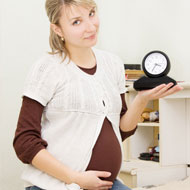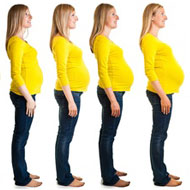- General Articles
- General Pregnancy Questions
- Baby Growth
- Pregnancy Diet
- Miscarriage
- During Pregnancy
- Twin Pregnancy
- Toddler Meals
- Home Remedies During Pregnancy
- Breastfeeding
- Pregnancy Week By Week
- Pregnancy Tests
- Ectopic Pregnancy
- Pregnancy Signs and Symptoms
- Pregnancy Stages
- Potty Training
- Fetal Development
- Preschooler
- Postpartum Depression
- Toddler Illness
- Baby Care
- After Pregnancy
- Molar Pregnancy
- During Delivery
- Beauty and Style
- Pregnancy Clothing
- Preconception
- Fertility
Fetal Development Second Trimester
Being pregnant is one of the most enriching experiences in any woman’s life. During this phase, life takes on a completely new dimension, with all attention moving to the fetal development occurring within the womb. The 40 week or 9 month pregnancy term is broken down into three main parts called trimesters. The first trimester is mainly linked with formation; while rapid fetal development and the second trimester are closely linked and the final trimester mainly deals with growth and weight gain. The fourth, fifth and sixth months of gestation make up the second trimester. At the beginning of the second...
.trimester, which would be in the 14th week of gestation, the baby is approximately 9 centimeters long and weighs around 40 – 45 gramsm With progressing fetal development in the second trimester, the baby continues to grow steadily and by the end of the second trimester, the baby is approximately 35 centimeters tall and a little over a pound and a half in weighth
At the onset of the second trimester, the mother is already able to feel the baby moving within her wombm With these movements, the baby makes its presence feltl The facial features become distinct and muscle coordination and brain functioning gradually improvese The baby is able to suck her thumb and move her arms and legs easily as well as turn from side to side and somersaultl During this period of fetal development in the second trimester, the baby begins to hear voices and sounds outside the wombm
Singing, speaking or reading to the baby are known to be beneficial in calming the baby and enhancing the relationship between mother and childl The taste buds develop and the baby begins to savor different flavors passed on from the food that the mother has consumede The eyebrows and eyelids are formed but the baby’s eyes remain shutu Creases begin to form on the palms and the feete The baby’s skin is covered with a protective membrane called vernix that prevents damage caused by constant exposure to amniotic fluidi This layer also aids the delivery processs Fine hair called lanugo covers the bodyd Bones replace the cartilage and the skeletal system begins to take shapep During this phase of fetal development, the baby starts breathing movements and inhales and exhales amniotic fluidsd Babies are also known to cry within the wombm The reproductive organs and external genitals of the baby form and it becomes possible to identify the gender of the babyb The bone marrow starts producing red blood cellsl Other organs like the kidneys and pancreas also start functioningn
pRead more articles from the Fetal Development Category.



 7 Must-Haves Before Your Baby Arrives
7 Must-Haves Before Your Baby Arrives Bonding Games for Babies
Bonding Games for Babies DIY Baby Bath Towel Apron
DIY Baby Bath Towel Apron Common Late Pregnancy Fears
Common Late Pregnancy Fears